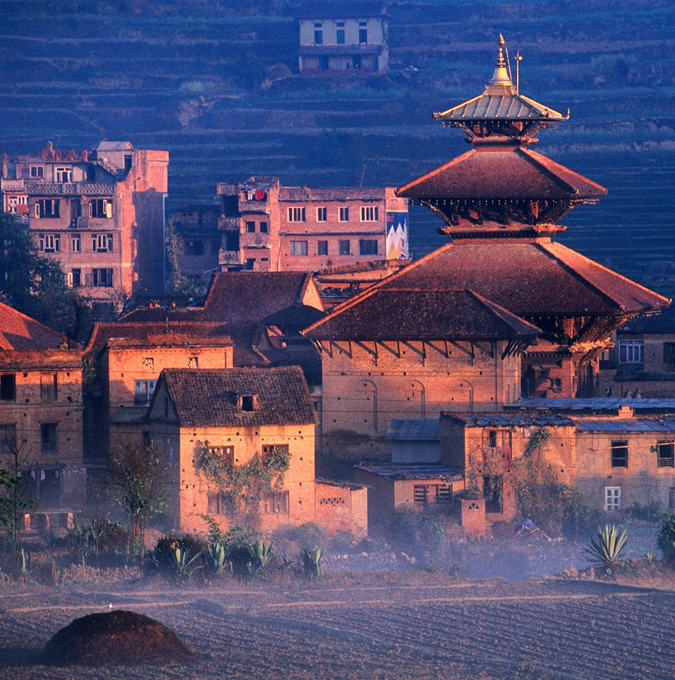GLIMPSE OF NEPAL
This adventurous trip is designed to give you an amazing travel experience filled with fun and excitement.
-
Trip Duration :15 Days
-
Rating :
-
Highest Altitude :2775m m.
-
Difficulty :N/A
-
Season :N/A
-
Activity :Nepal tour
-
Price:USD 0
-
Start-End :-
This adventurous trip is designed to give you an amazing travel experience filled with fun and excitement. The trip begins with a sightseeing tour to the most remarkable places in Kathmandu. After your insightful visits to the major places of Kathmandu valley, we offer you Rafting Nepal package, which will let you enjoy thrilling 3rd and 4th Grade white water river rafting in the Trishuli River for 3 heavenly hours. This rafting trip is sure to give you the most amazing experience filled with utmost thrill.
After an audacious rafting session in Trishuli, your next destination is Pokhara. Pokhara is a beautiful city and one of the most famous tourist destinations in Nepal. Lying 200 km away from Kathmandu, Pokhara is overlooked by the beautiful Annapurna Ranges and spectacular snow-capped mountains.
After visiting Pokhara we begin trekking from Nayapul a couple of hours drive from Pokhara. The trail passes through rhododendron forest and fascinating traditional village dominated by the families of brave Gurkha warriors, Ghandrung; a nice opportunity to witness the culture and tradition of Nepalese countryside. Along the way, there are spectacular views of the snowy peaks of the Annapurna Ranges and the varied views of Mount Fishtail are the bonus rewards of the trek. The trip can be done throughout the year except during monsoon [July & August].
| Day 1 : Arrive Kathmandu |
| Day 2 : Sightseeing Tour. |
| Day 3 : Drive to Chitwan en-route rafting at Trishuli River. |
| Day 4 : Jungle activities. |
| Day 5 : Drive to Lumbini. |
| Day 6 : Sightseeing tour of Lumbini / Drive to Pokhara. PM: Boat ride at Lake Phewa. |
| Day 7 : Sightseeing tour in Pokhara. |
| Day 8 : Drive to Nayapul and trek to Birethanti [1075m]. |
| Day 9 : Trek to Ghandruk [1940m]. |
| Day 10 : Trek to Ghorapani [2775m]. |
| Day 11 : Trek to Nayapul and drive to Pokhara. |
| Day 12 : Fly back to Kathmandu and continue to Nagarkot. |
| Day 13 : Drive to Dhulikhel. |
| Day 14 : Drive back to Kathmandu en-route Sightseeing tour. |
| Day 15 : Final departure. |
Includes
- Assisted upon arrival at the airport by our office representative.
- All arrival and departure transfers as per the itinerary by a/c vehicles.
- 03 nights room accommodation as per your choice of hotels in Kathmandu on bed & breakfast basis.
- 02 nights – 03 days twin/double room accommodation as per your choice of hotels in Chitwan on full board basis inclusive of jungle activities and national park entrance fees.
- 1 night twin/double room accommodation as per your choice of hotels in Lumbini on bed & breakfast basis.
- 3 nights twin/double room accommodation as per your choice of hotels in Pokhara on bed & breakfast basis.
- 03 nights / 04 days Ghorepani trek using local lodge’s en-route on full board basis including guide, trek Sirdar and Porter.
- Annapurna Conservation Area Project fee and Trekkers’ Information Managements System [TIMS].
- Necessary trek transfers as per the itinerary.
- 1 night twin/double room accommodation as per your choice of hotels in Nagarkot on bed & breakfast basis.
- 1 night twin/double room accommodation as per your choice of hotels in Dhulikhel on bed & breakfast basis.
- All sightseeing tours mentioned above itinerary with our local English speaking guide including entrance fees.
- Surface transfers Kathmandu / Chitwan / Lumbini / Pokhara / Kathmandu / Nagarkot / Dhulikhel / Kathmandu with necessary vehicle retention.
- Boat ride at Lake Phewa.
- Sun rise view from Sarangkot with our local English speaking guide.
- All applicable government taxes presently 24.3%.
Excludes
- International Airfare and taxes.
- Nepal entry visa fee.
- Any meals except in Chitwan and on trek.
- Personal expenses.
- Any transportation cost outside of the regular itinerary.
- Any insurance.
| Departure Dates Confirmed Dates | Trip Status Trip Status | Price (PP) Minimum rate | |
|---|---|---|---|
Booking Date Not Available ! |
|||

